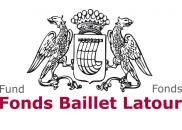The Ruckers family were to the harpsichord what Stradivarius was to the violin (Grant O'Brien, Ruckers. A harpsichord and virginal building tradition, Cambridge University Press, 1990, p. 1). The MIM's collection of harpsichords and virginals comprises 18 instruments with the Ruckers signature.
These 18 instruments constitute the most important collection of Ruckers instruments in the world. They form a testimony to the extreme skill of Flemish musical instrument makers. Indeed, from the late sixteenth century onward one name dominates all harpsichord making in Northern Europe: Ruckers. Their influence was extensive and their fame considerable, even outside Europe, and also long after their period of activity.
Given the major importance of the MIM's 18 Ruckers instruments, a project aiming at their conservation, study, restoration and valorization has been instigated. It responded to a call for projects on the Preservation of the artistic heritage of Belgium, an action program promoting the safeguard and conservation of important elements of the Belgian furniture patrimony, launched by the King Baudouin Foundation. The project could be started thanks to a first grant of 60,000 € by the Baillet Latour Foundation.
The Ruckers project is directed by Pascale Vandervellen.
The main objectives of the project
Study:
Despite their value, the 18 signed MIM's Ruckers instruments haven't been the object of comprehensive study so far. In a first phase, the project focuses on the scientific documentation of each instrument, involving traditional examination and measurements, as well as X-rays, CAT scans, dendrochronology of the sound boards, analysis of printed paper, analysis of pigments and mediums used on the painted surfaces, stratigraphic sections, infrared images and ultraviolet examination. The results of these analyses and their comparison with other existant Ruckers instruments in public and private collections enrich the actual organological knowledge in a significant and pioneering way.
Restoration:
The project's second phase aims to restore the 18 instruments. This involves consolidating their material, as well as clarifying and harmonizing their esthetic state. Certain instruments have an 18th or even 19th century decoration. However, the original decoration - most often consisting of printed paper - is sometimes still present under the paint layer(s), at least partially. The question arises if the present decoration should be preserved, or if a return to a previous stage or even the original state should be envisaged. Conscious decisions can only be based on the results of the analyses made in the study phase.
Valorization:
This heritage, its study and proposed restoration deserves to be suitably recognized. Since their restoration, the instruments are on display on rotation in the permanent exhibition room. Moreover, in 2017, the MIM produced a publication on all aspects of the project. On this link you can find a list of the paintings used as decoration on the Ruckers instruments as mentioned in the publication.
